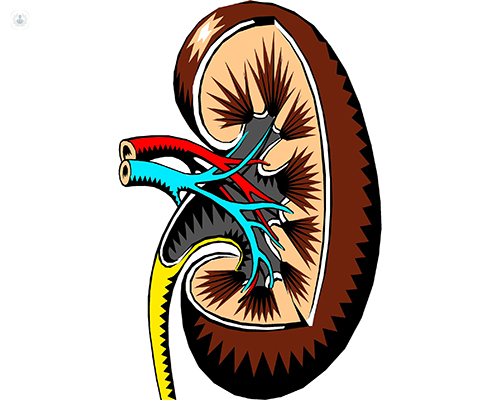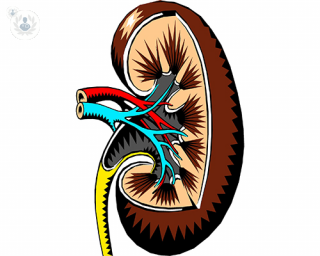Hydronephrosis
Miss Marie-Klaire Farrugia - Paediatric urology
Created on: 02-20-2018
Updated on: 05-05-2023
Edited by: Conor Dunworth
What is hydronephrosis?
Hydronephrosis literally translates to ‘water on the kidney’. It is a condition in which one or both of the kidneys swell as a result of urine build up, when urine cannot properly drain out from the kidney to the bladder. It can affect anyone at any age, but it is sometimes found in unborn babies during pregnancy scans. In this case, it is referred to as antenatal hydronephrosis.

Prognosis
Hydronephrosis generally does not cause long-term problems, as long as it is properly diagnosed and treated. In some babies, it does not even need to be treated and goes away on its own. If the condition is left untreated, however, the kidneys may be scarred which can lead to renal failure.
Symptoms of hydronephrosis
Hydronephrosis does not always cause symptoms. The main symptom, if any do occur, is pain in either the side or the back (flank pain). Other symptoms may include pain while urinating, increased urge, urinating more frequently, or incontinence.
Medical tests to diagnose hydronephrosis
Hydronephrosis is commonly found on antenatal scans during routine ultrasounds in pregnancy. It is estimated that hydronephrosis affects 1 in every 100 babies, but in most of these cases, it will resolve on its own. If it is spotted during an ultrasound, you may need to have more frequent scans during pregnancy, and your baby may need to have scans after birth to keep track of progress.
In adults, hydronephrosis is also generally diagnosed during an ultrasound. Your doctor may order further tests such as a blood test, a urine test, a CT scan and an X-ray of your kidneys to help find out the cause of the hydronephrosis.
What are the causes of hydronephrosis?
Hydronephrosis occurs when there is a blockage or obstruction to the outflow of urine from the kidney. In adults, causes include:
- Pregnancy
- Kidney stones
- BPH (benign prostatic hyperplasia)
- Pelvic organ prolapse
- Cancers in and around the urinary tract
- The ureters narrowing
In babies, the cause is not often clear, although it is speculated that hydronephrosis may occur as a result of an increase in urine the baby develops in the later stages of pregnancy. Sometimes it can be caused by the ureters not functioning properly, or by a blockage in the urinary tract. These problems usually resolve by themselves in babies.
Can hydronephrosis be prevented?
Hydronephrosis is generally triggered by an underlying cause which cannot be prevented. Having regular check-ups can help for a swifter diagnosis.
Treatments for hydronephrosis
The treatment of hydronephrosis aims to drain the urine from the kidneys, and to treat the underlying cause. The urine is drained by inserting a catheter into either the bladder through the urethra, or the kidney through a cut in the skin. If the kidney has been severely damaged, removal may be necessary.
Once the urine has been drained, the underlying cause must be treated.
Which type of specialist treats hydronephrosis?
A urologist typically treats hydronephrosis, though in children, a paediatric urologist is generally involved in treatment.














